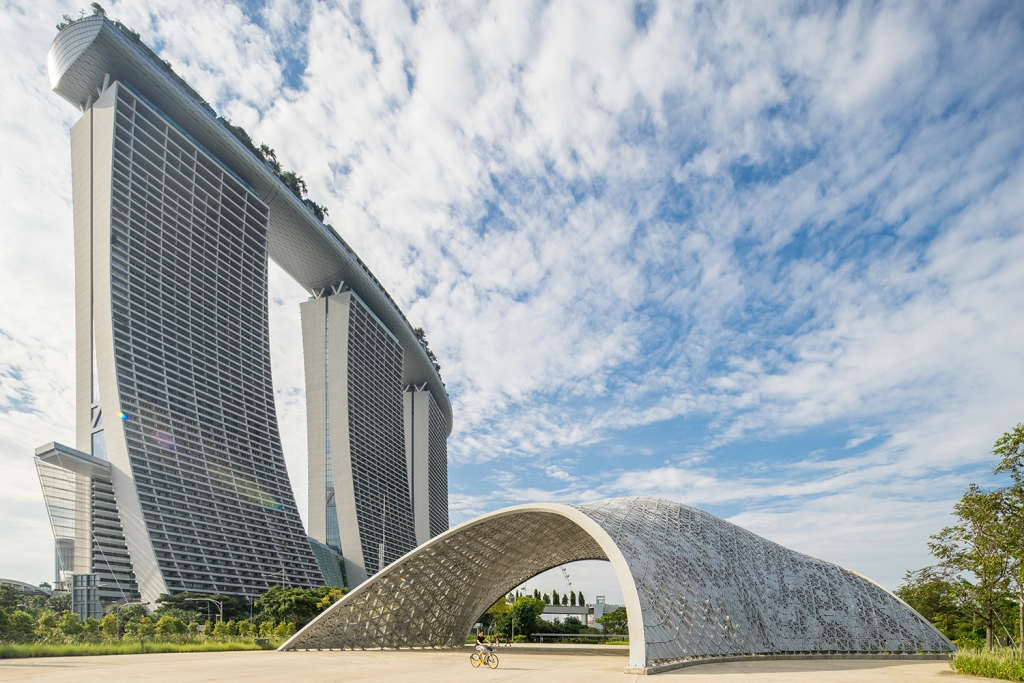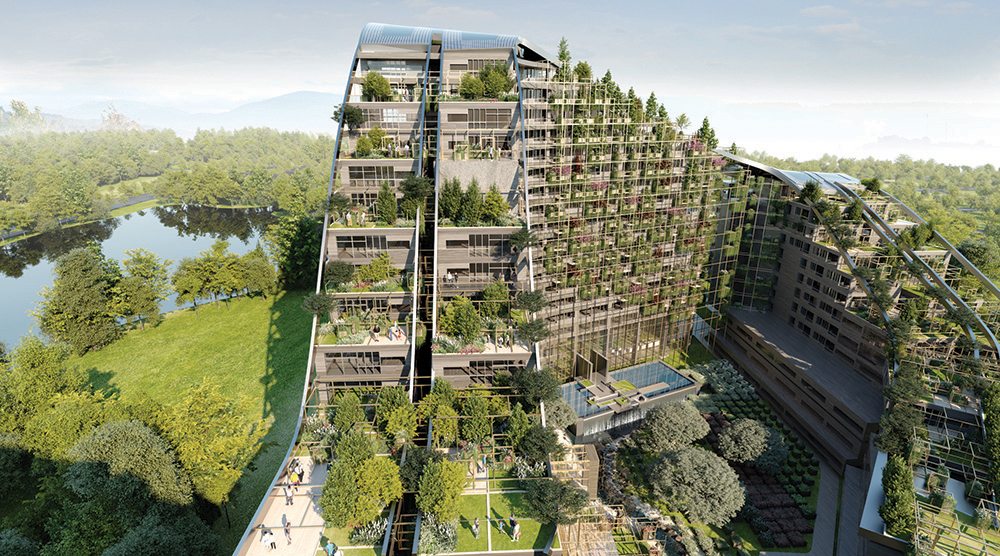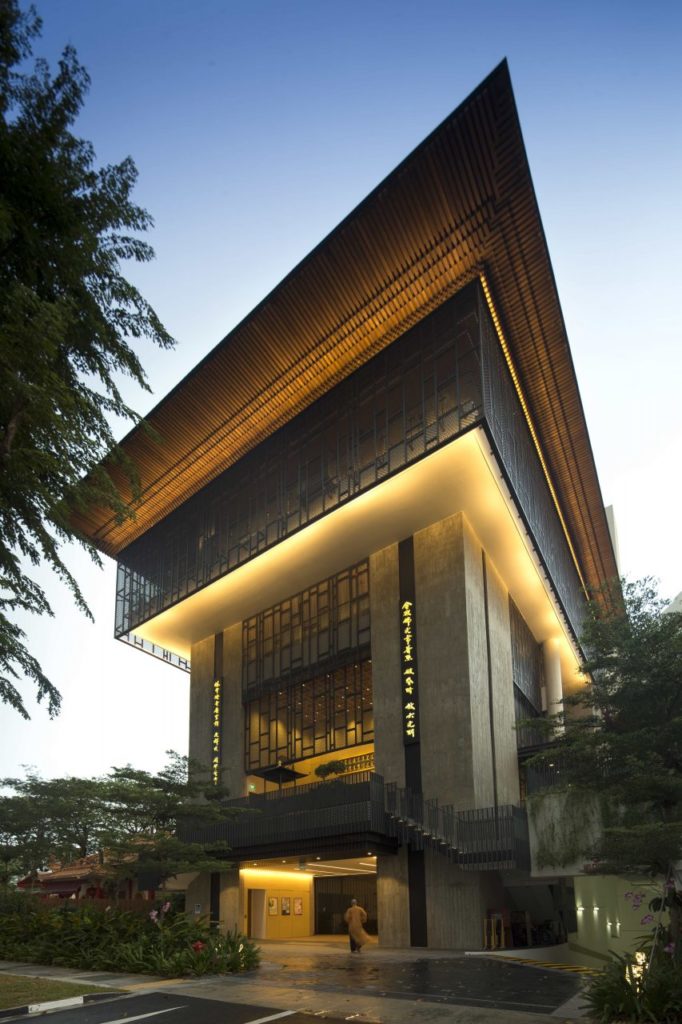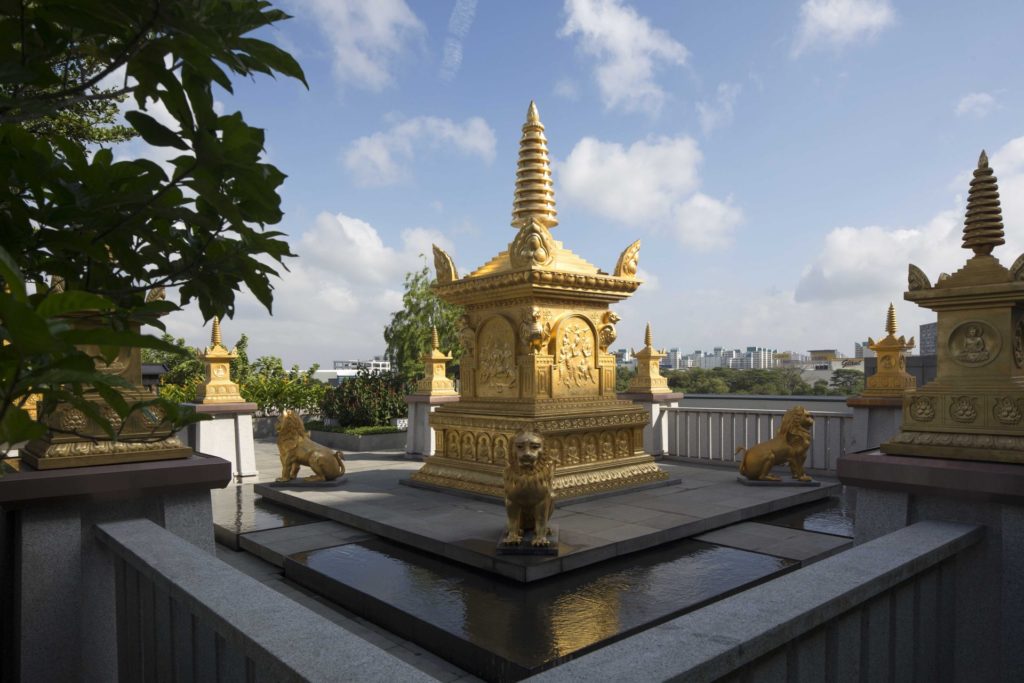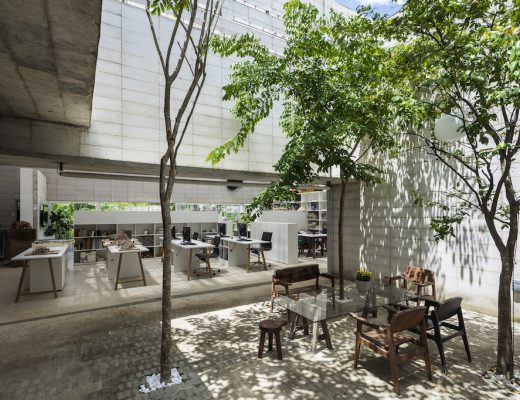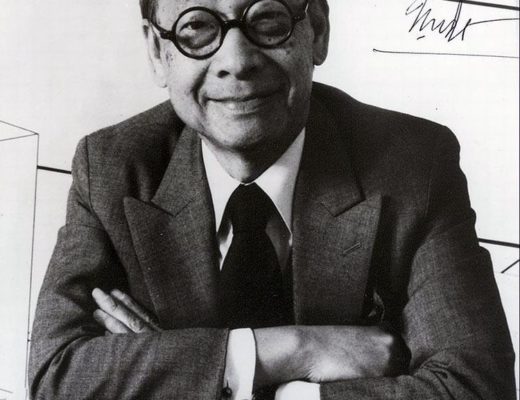The 2019 International Architecture Awards have been announced and a number of Singapore projects and firms have been recognised for their innovative and groundbreaking architecture and urbanism concepts. The International Architecture Awards are jointly organised by The Chicago Athenaeum: Museum of Architecture and Design, along with the European Center for Architecture Art Design and Urban Studies and Metropolitan Arts Press to honour significant new buildings, landscape architecture, and planning projects designed and/or built around the world by leading architects, landscape architects, and urban planners practicing nationally and internationally.
Singapore projects and Singapore firms had an impressive showing at the awards. Here are a few projects and firms which were recognised:
SENGKANG LARGE CHILDCARE CENTRE BY FREIGHT ARCHITECTS 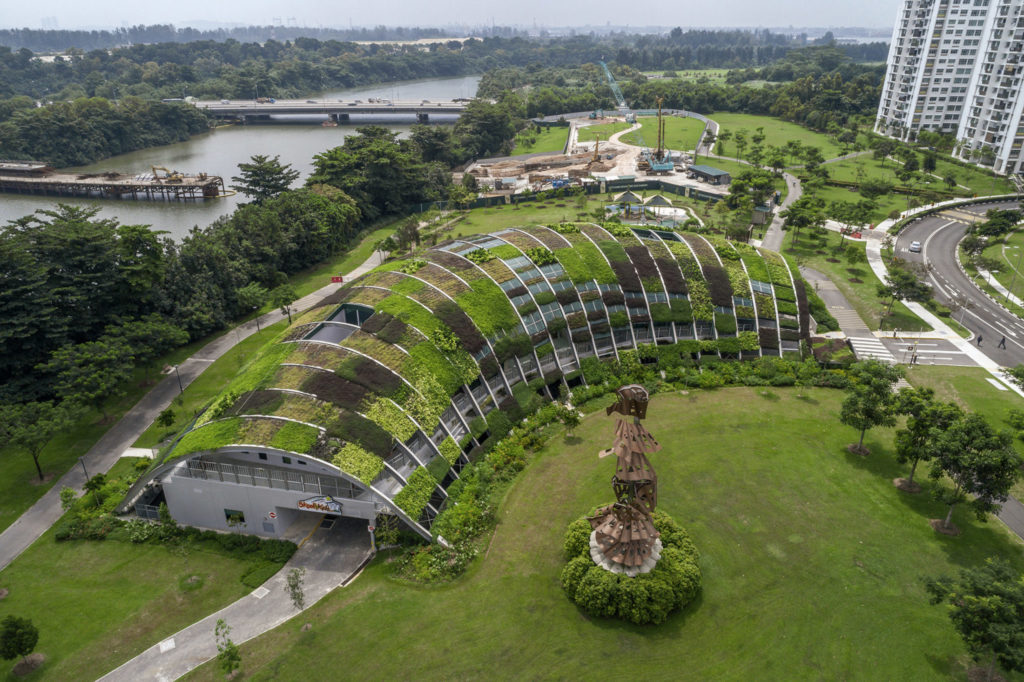 Sengkang Large Childcare Centre (SKLCC) by Freight Architects is the first and only project in Singapore that integrates an entire facility into a park. As part of Sengkang Riverside Park, the building is a seamless extension of the park’s constructed wetlands and open spaces. Emerging at the entrance of the park and gradually sloping down to the riverfront, the building features openings specially created to maximise natural daylight and allow for cross ventilation. This blurs the lines between indoor and outdoor, for a richer learning environment.
Sengkang Large Childcare Centre (SKLCC) by Freight Architects is the first and only project in Singapore that integrates an entire facility into a park. As part of Sengkang Riverside Park, the building is a seamless extension of the park’s constructed wetlands and open spaces. Emerging at the entrance of the park and gradually sloping down to the riverfront, the building features openings specially created to maximise natural daylight and allow for cross ventilation. This blurs the lines between indoor and outdoor, for a richer learning environment. 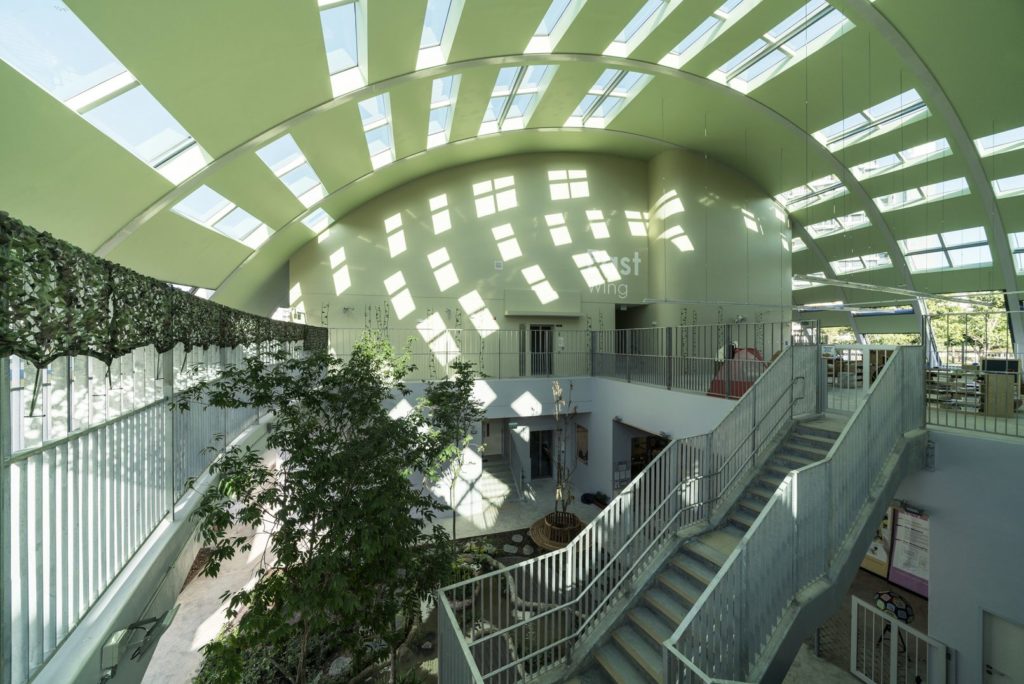 Says the design team: “In building SKLCC, we started with one thought: integration. We proposed a ‘rolling hill’ concept that would merge the building mass with the park, while providing a whimsical but exciting narrative for children as the ‘hill school’. The building adopts a crescent form around an existing park sculpture with an access road cutting through the building.
Says the design team: “In building SKLCC, we started with one thought: integration. We proposed a ‘rolling hill’ concept that would merge the building mass with the park, while providing a whimsical but exciting narrative for children as the ‘hill school’. The building adopts a crescent form around an existing park sculpture with an access road cutting through the building. 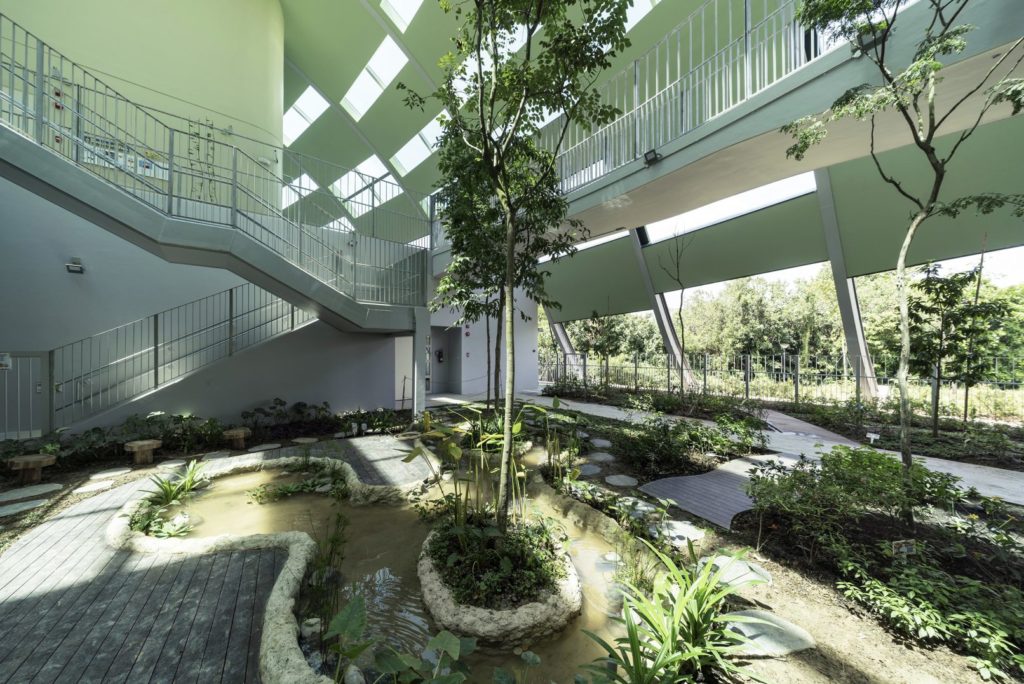 The green roof is supported by steel ribs that open up towards the edges, merging into the landscape. The two ends of the hill are tapered to reduce mass at the edges, while maintaining a very high volume at the central atrium at the opposite ends of which the classrooms are situated.
The green roof is supported by steel ribs that open up towards the edges, merging into the landscape. The two ends of the hill are tapered to reduce mass at the edges, while maintaining a very high volume at the central atrium at the opposite ends of which the classrooms are situated. 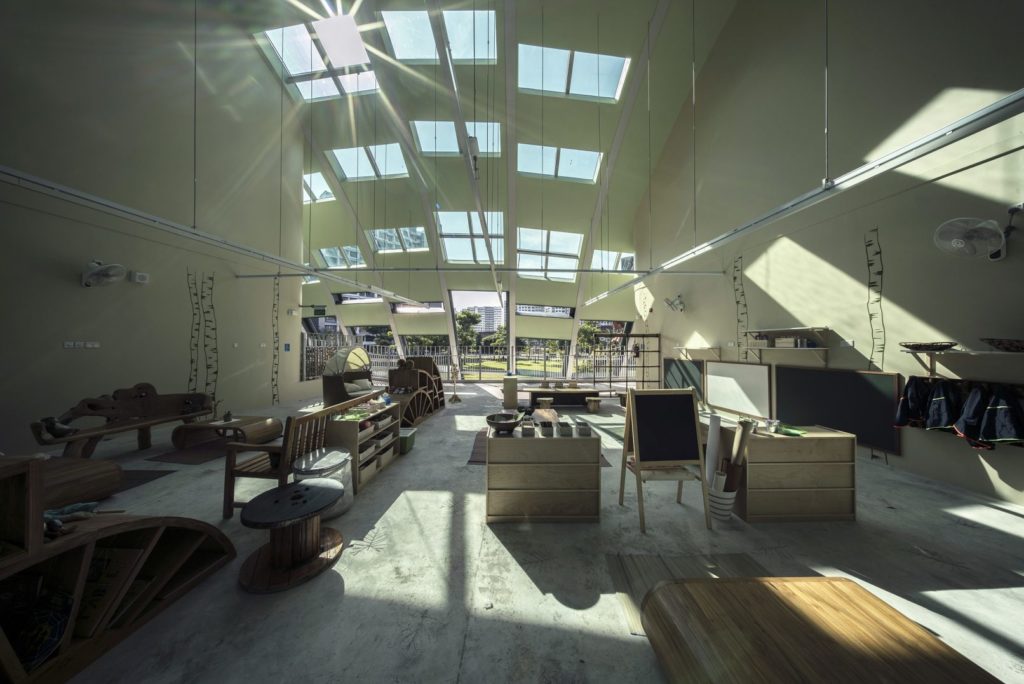
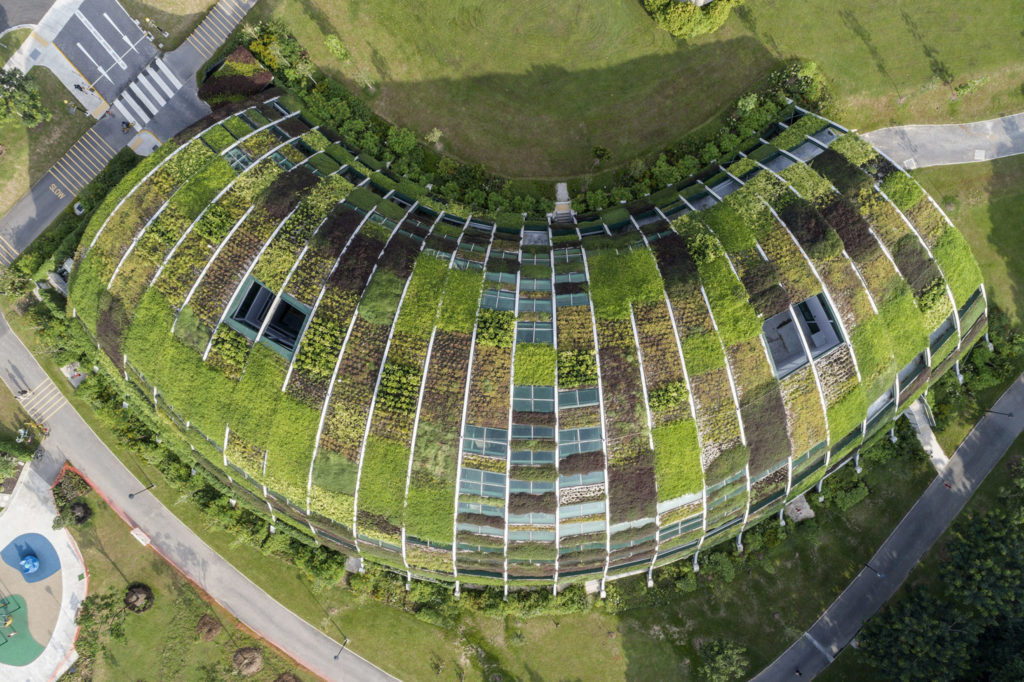 The central park is fully sheltered but open at both sides for natural daylight and ventilation. This area provides a garden setting upon arrival at the entrance and an airy indoor space for children’s learning. The classrooms also open out at both sides to wide semi-outdoor corridor spaces for sheltered learning and sand/water play, extending also to motor skills training.”
The central park is fully sheltered but open at both sides for natural daylight and ventilation. This area provides a garden setting upon arrival at the entrance and an airy indoor space for children’s learning. The classrooms also open out at both sides to wide semi-outdoor corridor spaces for sheltered learning and sand/water play, extending also to motor skills training.”
THE FUTURE OF US BY ADVANCED ARCHITECTURE LAB 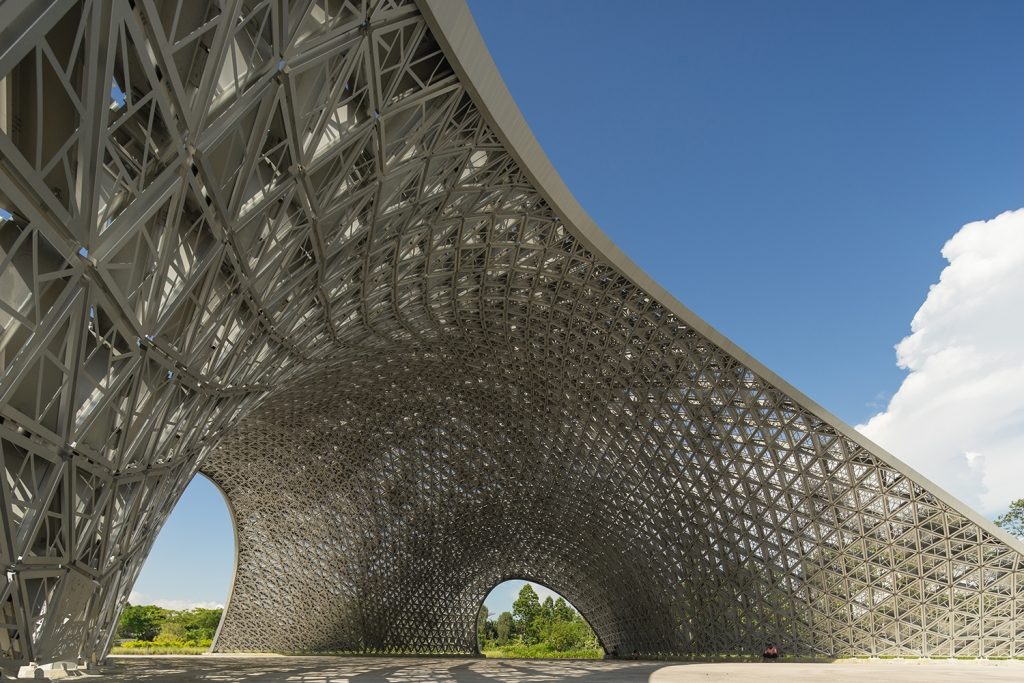 The Future of Us Pavilion, also known as SG50 Lattice by Advanced Architecture Lab (AAL) at Singapore University of Technology and Design (SUTD) was honoured for its success in determining an intrinsically efficient structural and load-resisting form is commendable. It was also the recipient of the coveted President’s Design Award 2018, Singapore’s highest honour for designers and designs across all disciplines.
The Future of Us Pavilion, also known as SG50 Lattice by Advanced Architecture Lab (AAL) at Singapore University of Technology and Design (SUTD) was honoured for its success in determining an intrinsically efficient structural and load-resisting form is commendable. It was also the recipient of the coveted President’s Design Award 2018, Singapore’s highest honour for designers and designs across all disciplines. 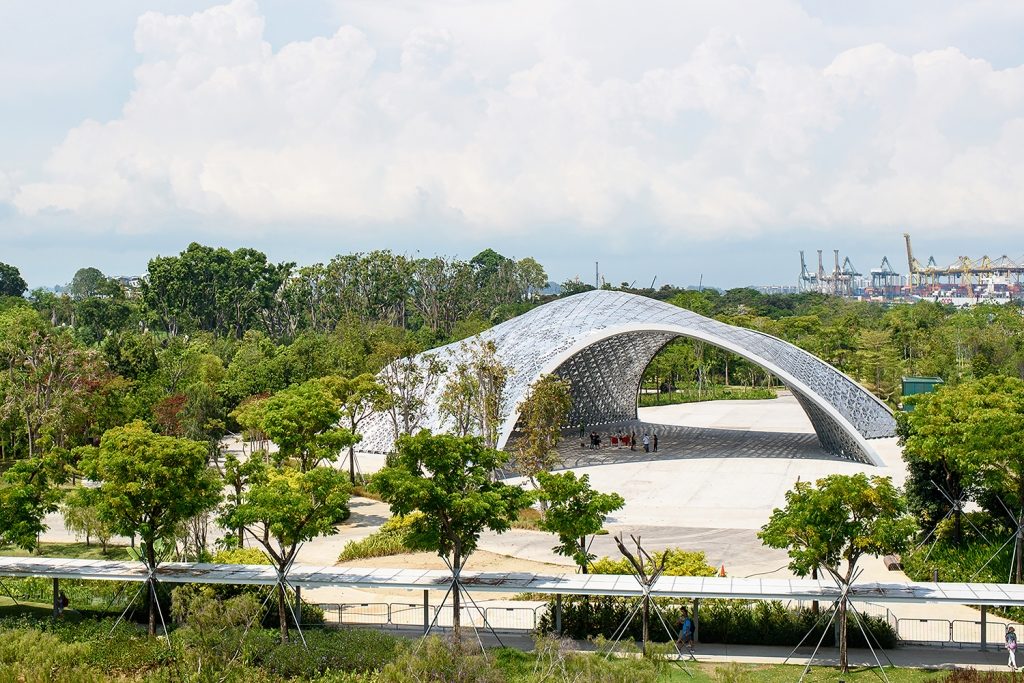 Through the parametric and algorithmic approach, the designers have created a futuristic structure that has pushed the boundaries of design, fabrication and construction methods. The high level of integration between digital technology and building processes allowed for the rapid production of a large number of individual micro-forms that make up the overall structure. The pavilion form also optimises material usage and minimises the embodied carbon footprint. In 2017, the Pavilion became a permanent landmark in the Gardens by the Bay. Renamed “The Silver Pavilion”, it plays host to important public festivals and events and has become an important public asset that contributes to advancing Singapore community and culture.
Through the parametric and algorithmic approach, the designers have created a futuristic structure that has pushed the boundaries of design, fabrication and construction methods. The high level of integration between digital technology and building processes allowed for the rapid production of a large number of individual micro-forms that make up the overall structure. The pavilion form also optimises material usage and minimises the embodied carbon footprint. In 2017, the Pavilion became a permanent landmark in the Gardens by the Bay. Renamed “The Silver Pavilion”, it plays host to important public festivals and events and has become an important public asset that contributes to advancing Singapore community and culture.
CLOISTER HOUSE BY FORMWERKZ ARCHITECTS 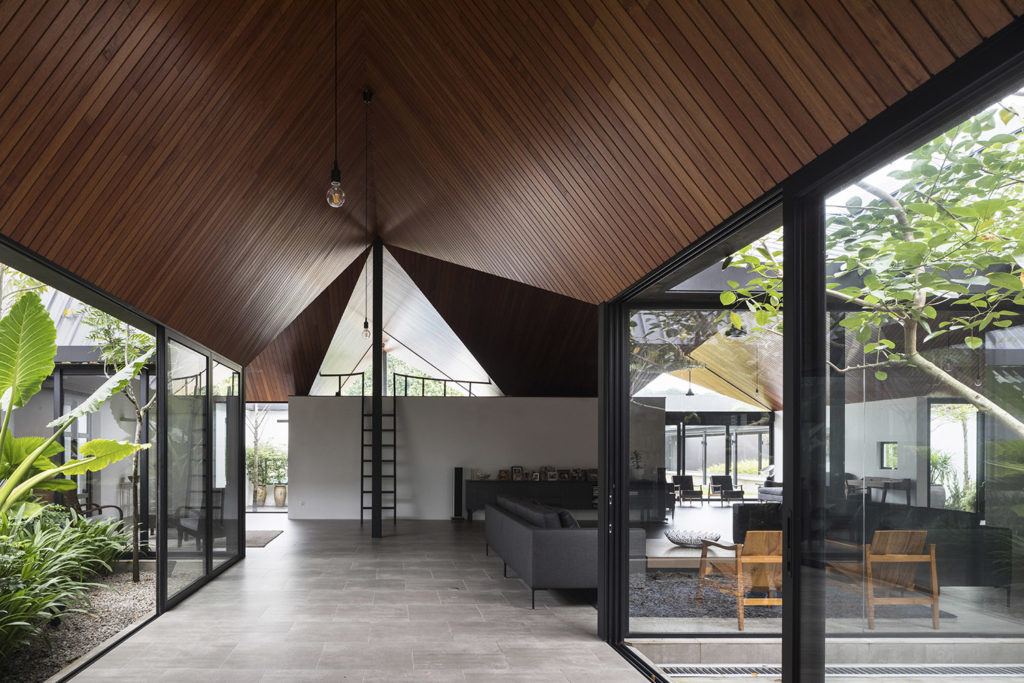 The house, located in the Johor state of Malaysia, was built for a client and his family who sought a communal way of living, but also wanted to preserve privacy and security. Being frequent entertainers, the client desired for generous spaces for hosting events of various scales. Inspired by the Chinese courtyard house, the project aims to readapt the vernacular typology in a tropical context. Sitting on 4,200m² land, five-metre concrete walls form a fortified enclosure around the plot, creating a safe environment for the young children to play outdoors without much supervision.
The house, located in the Johor state of Malaysia, was built for a client and his family who sought a communal way of living, but also wanted to preserve privacy and security. Being frequent entertainers, the client desired for generous spaces for hosting events of various scales. Inspired by the Chinese courtyard house, the project aims to readapt the vernacular typology in a tropical context. Sitting on 4,200m² land, five-metre concrete walls form a fortified enclosure around the plot, creating a safe environment for the young children to play outdoors without much supervision.
Within the compound, the main bulk of the house, where communal living and entertaining occurs, is compacted over a third of the plot size, freeing up a vast expanse of space for a back garden, pool and an annex block which houses the that is spatially delineated into nine sub-grids, punctuated with a series of courtyards. The courtyards were an essential strategy for the plan to work in the context of the tropics, as they bring natural light and ventilation to every area of the deep building form.
Each courtyard is characterised with a unique autonomy, some housing water ponds and gravelled gardens, while others are wholly enclosed with bricked walls as an entertainment room, or screened with sliding glass panels. Internally, courtyard and bedrooms anchors the main blueprint, while the living spaces clusters around the courtyard as cloisters. Intuitive to the changes of the sun-path, communal activities occur sporadically around the courtyards that receives daylight. The pitch roof, is inverted and expressed as a key architectural ceiling feature in the house. The roof slopes towards the courtyards in a reverse pitch fashion, giving rise to a series of undulating timber ceiling ridges. Comprising of simple architectural elements, the interior palette has been pared down to express the undulating timber ceiling as the main architectural feature.

